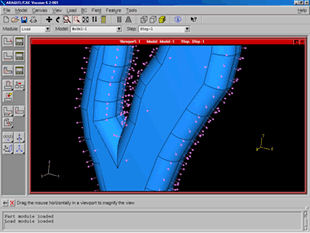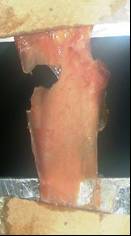Atherosclerosis is commonly referred to as a "hardening" or "furring" of the arteries. When this occurs in the carotid artery blood flow to the brain can be restricted resulting in a stroke. Dr Michael Sutcliffe and colleagues are studying the material, known as plaque, which is deposited on the walls of arteries that causes Atherosclerosis. They are working to understand the interactions between the geometry and the material behaviour of the plaque, and the fluid mechanics of the blood flow through the artery.


The overall aim of the project is to use a combination of imaging and modelling of the carotid artery to develop better ways of estimating risk and so improve patient selection for different therapies. This includes a study of the stiffness and rupture of the plaque. Dr Jonathan Gillard at the Department of Radiology based in Cambridge's Addenbrooke's hospital, has developed world-leading techniques to produce high resolution images of the carotid artery, using high-resolution Magnetic Resonance Imaging (MRI) and Computed Tomography (CT). Michael and colleague Dr Yong Li are working with these imaging techniques.
The research team have recently received a donation by Instron of a universal testing machine, which will be used to assist with these tests. This machine will also be used for similar work on the mechanics of brain tissue that is being undertaken by a PhD student, Mr Dongjoo Kim, with Prof. John Pickard and Dr Marek Czosnyka at the Department of Neurosurgery.

